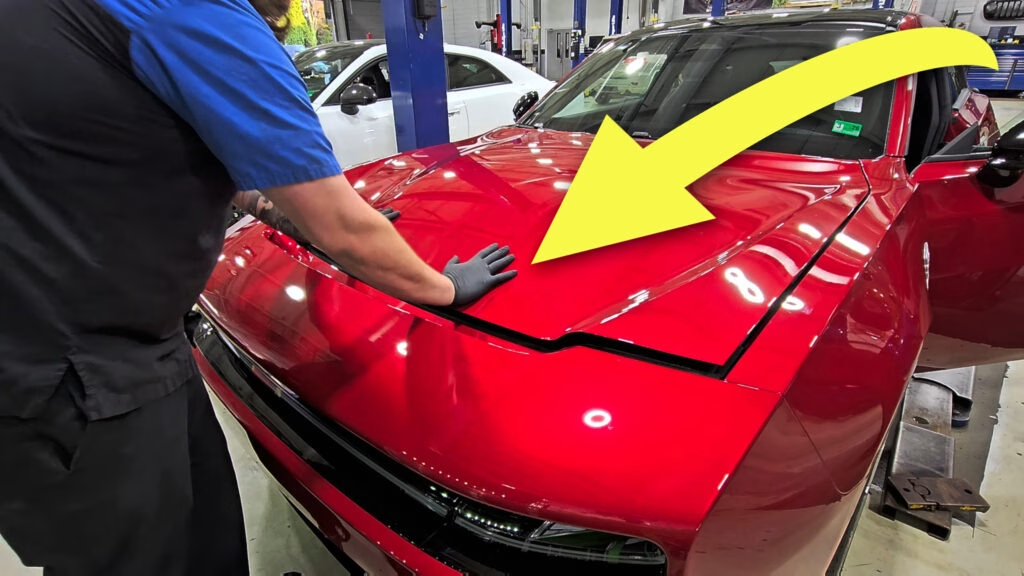Understanding the Hood Mechanism of the Dodge Charger Daytona EV
The Dodge Charger Daytona EV has generated significant buzz since its launch, but it has not been without its quirks. One of the most pressing concerns for new owners is the proper handling of the vehicle’s hood, particularly how to close it without risking damage. This article delves into the nuances of the Charger Daytona’s hood mechanism, the potential pitfalls of improper handling, and expert advice on maintaining the vehicle’s integrity.
Why Proper Hood Closure Matters
The Charger Daytona, while embodying the spirit of a classic muscle car, comes equipped with modern technology that requires careful handling. According to Dodge’s official service manual, slamming the hood can lead to serious issues, including damage to the latch mechanism. This is particularly concerning for owners who expect a robust vehicle that can withstand the rigors of everyday use. The reality, however, is that the Charger Daytona’s frunk (front trunk) is sensitive and requires a gentle touch.
Certified technician Jordan Rose, who specializes in Mopar vehicles, has shared insights from his experience working with early-production models of the Charger. He has observed that owners often inadvertently damage the latch by closing the hood too forcefully. In one case, a bent latch prevented the frunk from opening via the dashboard button, showcasing how a seemingly minor mistake can lead to significant inconvenience and repair costs.
The Risks of a Damaged Latch
A malfunctioning latch can create a host of problems for Charger Daytona owners. If the latch is misaligned or broken, the hood may remain stuck in an open position or, worse, bounce while driving. This not only poses a safety risk but can also lead to further damage to the vehicle. Rose emphasizes that treating the hood with care is essential to avoid these complications.
To illustrate the importance of proper handling, consider the case of a Charger owner who experienced issues with their frunk after slamming the hood. The repair involved replacing the bent latch, which could have been avoided with careful closure. This example underscores the need for owners to be mindful of how they interact with their vehicles.
Expert Recommendations for Closing the Hood
To help owners avoid mishaps, Dodge has provided clear instructions on how to properly close the hood of the Charger Daytona. Here’s a step-by-step guide:
1. **Gently Lower the Hood**: In one continuous motion, lower the hood until it rests on the latch mechanism.
2. **Apply Pressure**: Place both hands on the center of the hood, above the latch mechanism, and press down firmly until the hood is latched.
3. **Confirm Latching**: Always check to ensure the hood is securely latched in place.
Dodge explicitly cautions against dropping or forcefully closing the hood, as this can lead to damage. Owners are advised to only apply pressure in the designated areas to avoid unnecessary wear and tear.
Looking Ahead: Will ICE Models Face Similar Issues?
As the Charger lineup expands to include internal combustion engine (ICE) versions, many are left wondering whether these models will share the same sensitivity regarding hood closure. The design differences between the electric and gas-powered models, particularly the bulging hood of the ICE version, may influence how they handle rough treatment. It remains to be seen whether the ICE models will require the same level of care as their electric counterpart.
Final Thoughts on Charger Daytona Ownership
Owning a Dodge Charger Daytona EV is an exciting experience, but it comes with its own set of responsibilities. By understanding the importance of proper hood closure and following the manufacturer’s guidelines, owners can avoid costly repairs and ensure their vehicle remains in top condition. As the automotive landscape continues to evolve, staying informed and attentive to your vehicle’s needs will enhance your ownership experience.

